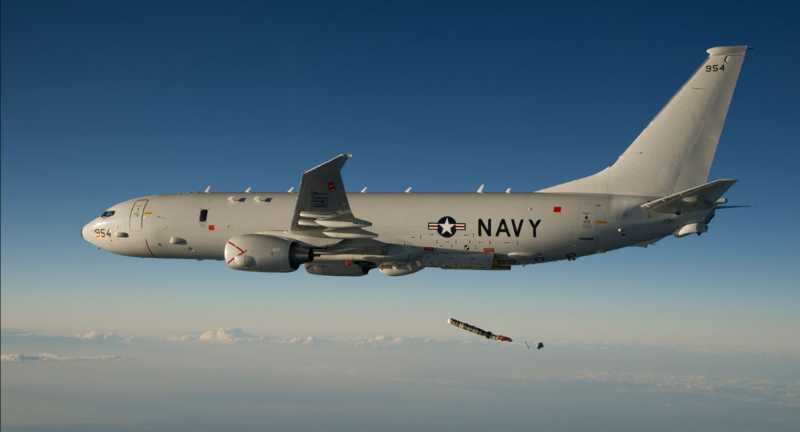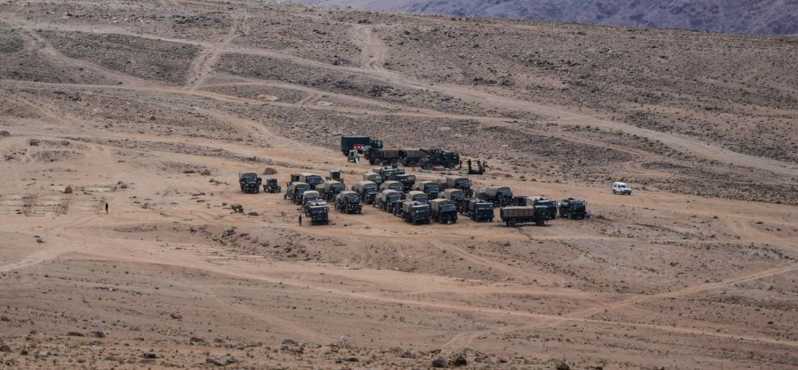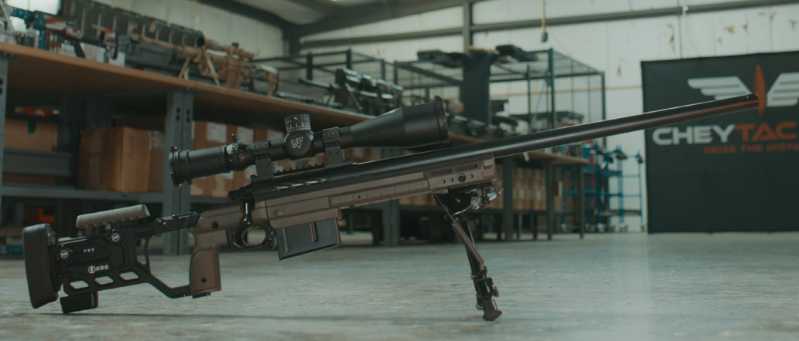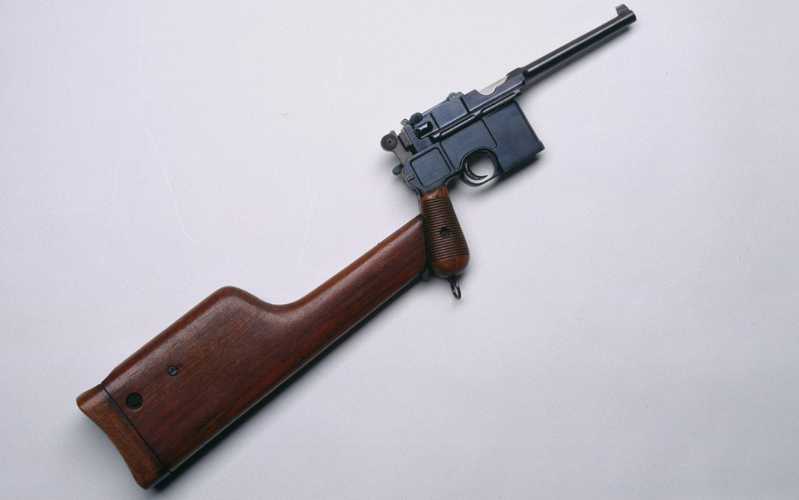On June 17, 2024, the new Leopard 2 A-RC 3.0 main battle tank designed by KNDS was displayed at the 2024 European Sartori Defense Exhibition. This tank is equipped with an unmanned turret, a modular automatic loader and a comprehensive sensor suite, and its comprehensive combat capability has reached a new level. It will become a temporary solution before the next generation of the main ground combat system (MGCS) of France and Germany is finalized, and it is also an important technical forerunner.
Development Overview
The Leopard 2 tank is famous for its excellent basic design and advanced technology. Before the Leopard 2A-RC3.0 tank appeared, Germany had already launched the Leopard 2A8 main battle tank, showing the strong technical upgrade potential of this type of tank. The Leopard 2A8 main battle tank was first unveiled at the International Defense and Security Technology Fair (IDET) held in Brno, Czech Republic in May 2023. It was jointly developed by Krauss-Maffei Wegmann (KMW) of Germany and Rheinmetall and is based on the Leopard 2A7+. The crew of the Leopard 2A8 consists of a driver, gunner, loader and commander. The Leopard 2A8 is powered by a 1,600-horsepower diesel engine with a maximum speed of 70 km/h and a maximum range of approximately 450 km. Its torsion bar suspension system and durable tracks enable the tank to travel on difficult terrain, including steep slopes and water obstacles. In addition, the tank is equipped with an auxiliary power unit (APU) for charging the battery when the main engine is shut down. The main weapon of the Leopard 2A8 is a 120mm/L55 smoothbore gun, which can fire a variety of ammunition, including DM11 programmable ammunition, which can be detonated at a specific point in its trajectory to effectively fight against different targets such as light armored vehicles, infantry and fortifications. The tank is equipped with a third-generation infrared thermal imager, as well as a fire control system to improve aiming accuracy. The armor and firepower have been upgraded, using an advanced armor protection system, the latest generation of multi-layer armor, combining steel, tungsten, composite fillers and ceramic components. In addition, it is equipped with the European Trophy active protection system to intercept incoming shells. The Leopard 2A8 has been recognized by the market as soon as it was launched. The German Federal Procurement Office signed a framework agreement for up to 123 tanks. Norway has pledged to purchase 54 Leopard 2A8s, which are expected to be delivered between 2026 and 2031. Italy recently reached an agreement with KNDS and Leonardo to purchase 300 Leopard 2A8 tanks, aiming to replace its Leopard 1 and C1 Ram tanks. Recently, the Czech Republic approved a plan to buy up to 77 Leopard 2A8s, indicating widespread interest in using this type of tank to modernize armored forces across Europe. Inspired by the success of the Leopard 2A8, in order to compete with Rheinmetall’s KF51 "Black Panther" tank (upgraded with the Leopard 2A4 tank chassis) and the latest KF51-U (unmanned turret version), KNDS also launched the corresponding Leopard 2A-RC 3.0 tank for the vast market of old Leopard 2 tank upgrades. The name A-RC stands for the arc or bridge connecting the Leopard 2 and Leopard 3. RC stands for remote control, 3 for 3-man crew, and 0 for no one in the turret. Its unmanned turret design comes from RCT120
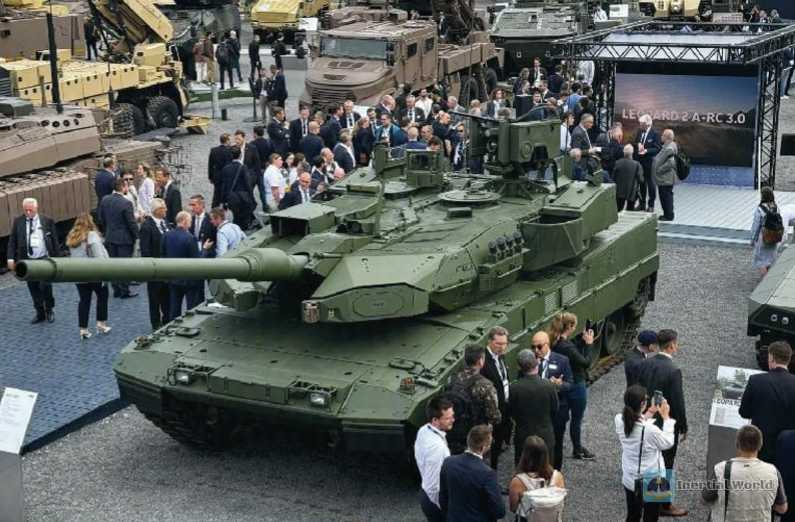
At the 2022 Sartori Defense Exhibition, the German KMW company demonstrated a tracked "Boxer" multi-purpose armored vehicle for the first time. The vehicle is equipped with an RCT120 non-penetrating unmanned turret, equipped with a 120mm smoothbore gun and an automatic loading system. The gun has a 360-degree azimuth firing range and an elevation angle of -10~+20 degrees. The vehicle carries a total of 15 rounds of 120mm ammunition. The commander and gunner attack targets through the SDRI multi-spectral sensor kit installed on the turret (including an independent gunner’s sight and a commander’s periscope), with "hunting-killing" capabilities. The remote weapon station on the top of the turret can be equipped with a 12.7mm caliber heavy machine gun, in addition to a "Spike" LR2 anti-tank missile launcher. The non-penetrating unmanned turret of the Leopard 2A-RC3.0 tank is an improvement on the RCT120 unmanned turret. Western tanks generally use tail-type loaders, which prevents them from achieving a significant weight reduction in the turret like the TTBT-14 unmanned turret tanks with ammunition storage in the vehicle body, and can only save the structural weight of the original crew part. The non-penetrating turret provides another possibility, that is, the vehicle body can be changed from the traditional three-stage to a two-stage (crew compartment + power compartment), which has a lot of room for weight reduction. The turret itself can also provide considerable top shielding for the crew compartment and power compartment (but it will also bring new problems for maintenance, crew entry and exit, etc.). It is not clear how Western tanks will take advantage of the non-penetrating turret because the new chassis has not yet been developed. The Leopard 2A-RC3.0 tank exhibited this time has the problem of difficult entry and exit for tank crew, which needs to be further improved in the future.
Basic performance
The Leopard 2A-RC3.0 uses the chassis of the Leopard 2, but uses a newly designed unmanned turret, so the data has changed significantly. The tank is 7.95 meters long (11.17 meters including the gun), 3.73 meters wide, 2.4 meters high (2.84 meters including the remote weapon station), and has a ground clearance of 500 mm. The tank is equipped with a 1,500-horsepower diesel engine, most likely the MTU MB873Ka-501 twelve-cylinder diesel engine with a Renk HSWL354 transmission system. The maximum speed can reach 65 kilometers per hour and the maximum road range is 460 kilometers. Depending on the configuration, the weight of the tank is controlled within 60 tons. The significant weight reduction will make the new version more maneuverable and transportable, and may bring additional benefits in terms of fuel economy. The chassis has been reshaped and equipped with additional reactive armor. The mass-produced version will use a hydropneumatic suspension system. Only three people are needed to operate the tank, all of which are concentrated in a specially reinforced compartment at the front of the vehicle body. The gunner and the commander are both in the front of the original turret basket, which is different from the side-by-side crew compartments of the US "Abrams" X or the Russian T-14 "Armata", providing more space and higher comfort for the crew. This also makes the protective armor on both sides of the crew compartment thicker, and has stronger large-angle protection capabilities compared to the T-14 and "Abrams" X. The front of the crew compartment also has a certain backward tilt angle, which also enhances the protection against kinetic armor-piercing projectiles.
The crew enters through two sliding doors in the front body. The compact crew layout enhances the all-round passive protection of the crew compartment. KNDS said this will reduce their vulnerable areas by 30%, provide maximum protection, and greatly improve the survivability of the crew in harsh environments. The crew compartment, under the shield of the front armor of the turret, can effectively resist the FPV crossing aircraft that "kills all sides" on the Russian-Ukrainian battlefield. The turret has no hatch design, which can also effectively prevent drones from dropping small bombs into the turret. The defect of eliminating the periscope is compensated by multiple situational awareness cameras to ensure redundancy. The shells are stored in the tail compartment, so even if they are hit by FPV or anti-tank missiles, they will not explode like Russian tanks. The only weakness is that the power compartment is not sufficiently defensive against drones, and it is easy to lose power after being hit by FPV and become a fixed target. To make up for this deficiency, a new remote weapon station is installed on the top of the turret, equipped with a 30x113mm M230LF machine gun from Orbital Systems ATK (now Northrop Grumman’s Innovation Systems Division). The remote weapon station is integrated with the commander’s sight and is said to have anti-drone capabilities. The gun can fire anti-drone proximity fuze shells and is also equipped with more types of sensors, allowing the tank to protect the entire battle group, not just itself. The remote weapon station is also equipped with 8 multi-purpose launchers that can fire smoke bombs/grenades.
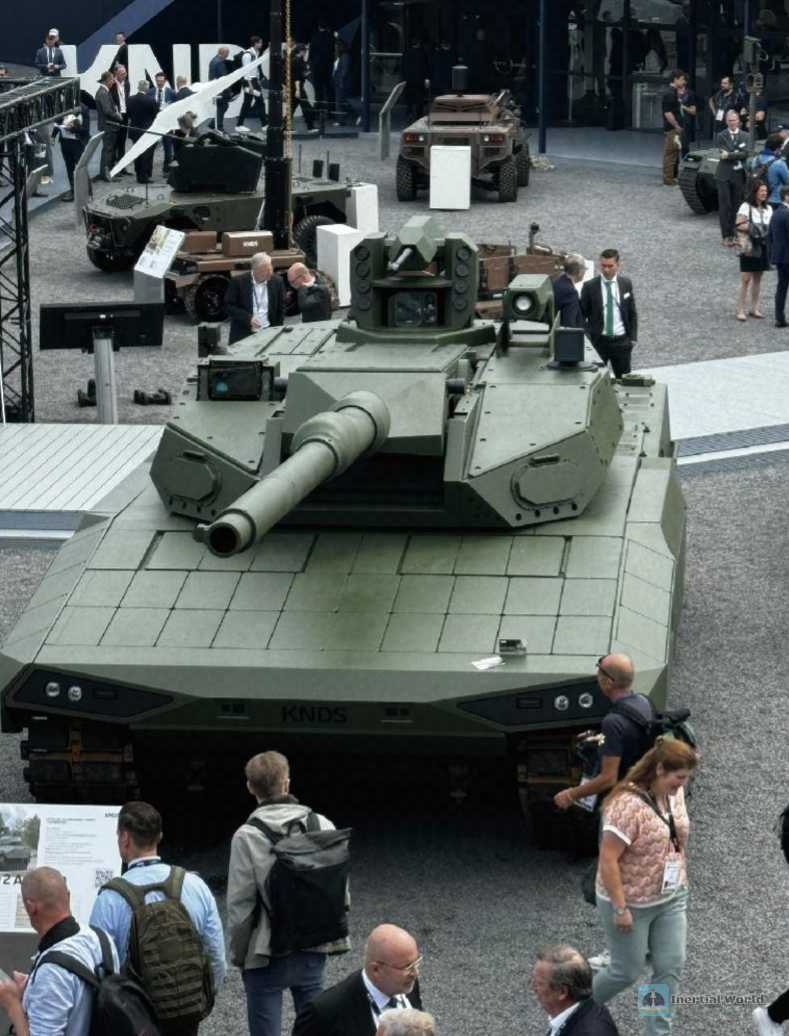
The most important change in the Leopard 2A-RC3.0 tank is the new non-penetrating unmanned turret with a modular design (which means that the crew is completely isolated from the ammunition compartment), so the vehicle is actually an unmanned turret demonstration vehicle that can be replaced with a variety of chassis. The turret can be equipped with the existing 120mm main gun (the default configuration of Western tanks at present), as well as the 130mm or 140mm smoothbore guns under development, and the conversion can be completed in just one hour, depending on the customer’s preference. Previously, KNDS announced the successful completion of another round of testing of its Ascalon artillery system, which is now equipped with an enhanced main battle tank (EMBT) demonstrator, equipped with an unmanned ADT140 turret and equipped with a 140mm version of the Ascalon gun. The unmanned turret will use an automatic loader to feed ammunition to any type of main gun installed. KNDS said the vehicle will be able to fire three rounds in 10 seconds, and the ammunition storage system adopts a double-layer 20-round modular design (it can also increase the top height and arrange the third row to carry more rounds) to further adapt to different caliber options, and it will also reduce one loader. The ammunition rack is similar to a beverage box, arranged in a 90-degree rotation, with the warhead pointing to the tail of the gun for easy loading. Since there are no crew members in the turret, even if the ammunition explodes, the crew will not be threatened. The Leopard 2 A-RC 3.0 tank can carry the same amount of ammunition as the current Leopard 2 tank when needed, that is, 42 rounds. The 22 rounds of ammunition will continue to be placed in the front of the vehicle, either compactly next to the driver or on his left and right sides-if his seat is moved to the middle, the specific position has not yet been determined. KNDS plans to optimize the crew layout in the vehicle in the next two years. The spare ammunition in the vehicle can be supplied to the turret ammunition rack in the vehicle through the hatch at the bottom of the turret, and the crew does not need to leave the tank. The predecessor of this turret, the RCT120, uses two sets of offset trunnion rotating elements driven by high-power motors, which act as front and rear trunnions and serve as driving fulcrums for each other, achieving a range of -10 to +20 degrees (shortening the distance between the two axes can achieve a larger elevation angle, and the maximum elevation angle is known to be 30 degrees. The specific situation needs to be adjusted in combination with the balance state of the stable axis). At the same time, the turret is very low (the height of the turret depends only on the size of the tail compartment or the thickness of the top armor required for the crew compartment). Compared with various double-trunnion lifting turrets/gun mounts that have existed in the past, this form has simpler control logic, more compact structure and easy to achieve sealed protection. Although the maximum shooting angle is small and cannot reach the level of self-propelled artillery, this does not have any adverse effects.
The positioning of the next generation of tanks is already very clear, and the firepower of tanks is still mainly direct fire. KNDS Germany has designed a movable double-ear shaft mechanism for the RCT turret of the Leopard 2A-RC3.0, which enables the rotation axis of the gun to move backwards, close to the edge of the breech, and even at an elevation of 20 degrees, the recoil distance will not allow the breech to pass through the seat ring and hit the inside of the vehicle body, so that more space can be left in the vehicle body to arrange the crew compartment. There is even space between the rear of the crew compartment and the engine to arrange an ammunition rack to store more spare ammunition, and through the hatch at the bottom of the turret, the ammunition rack in the turret can be replenished without leaving the tank. Recently, KNDS France (formerly Nexter Systems) released a live-fire test video of its latest configuration of the 120mm "hardened armor steel counter-armor-piercing projectile" (SHARD), and the first generation of SHARDMK1 was originally displayed by Nexter at the 2022 European Defense Exhibition and can be fired by all tank armored vehicles equipped with 120mm smoothbore guns that meet NATO standards. SHARD stands for "hardened armor steel counter-armor-piercing projectile" and is currently Nexter’s new generation of tungsten alloy armor-piercing projectiles. The SHARDMk1 armor-piercing projectile has a mass of 22 kg and an initial velocity of 1720 m/s (when fired from a 52-caliber gun). Its armor-piercing performance is nearly 20% higher than the OFLE120F1B that Nexter offers to the market. It combines high penetration of metal armor and complex targets with very good dispersion. Its new lightweight three-centering sabot structure combines an extended D10 tungsten carbide armor-piercing body, optimized tail fins and low-erosion double-base propellant developed by EURENCO, which can generate greater energy while significantly reducing pressure levels, thereby significantly reducing barrel wear. The SHARD cartridge case design is designed to allow incremental development to adapt to future threats and can be filled with propellants purchased from different suppliers around the world. In this way, the final ballistic performance of the ammunition can be improved by more than 20% in a short period of time. The promotional video released by KNDS also shows the SHARDMk2 armor-piercing projectile for the next generation of tanks. Compared with the SHARD Mk1 used in the Leclerc and Leopard 2 tanks, its lower part of the sabot has an extended shell structure. According to Nexter’s initial disclosure, SHARD is also testing different types of armor-piercing materials. In addition, SHARDMk will also have a higher pressure propellant to increase the chamber pressure. Since the beginning of 2022, SHARD has successfully carried out several shooting activities on the 52-caliber CN120F1 smoothbore gun and the 44-caliber Rh120. These dynamic tests can confirm the performance level achieved during development testing. The tank can fire DM11 multi-mode fragmentation grenades (HE-FRAG-T). The projectile is designed by Rheinmetall, weighing 29 kg, the warhead weighing 13 kg, the charge weight 2.17 kg, the initial velocity 1015 m/s (fired by L55) or 980 m/s (fired by L44), the range 5000 meters; the front probe, the warhead built-in tungsten ball, three-mode fuze, with three modes of collision, delay, and programmed air burst. The mass-produced turret will also be equipped with a 7.62 mm coaxial machine gun.

A pop-up Spike LR2 anti-tank missile launcher is installed on the top of the unmanned turret of the Leopard 2 A-RC 3.0 tank, which can accommodate various types of line-of-sight and non-line-of-sight missiles. The range of the Spike LR2 heavy anti-tank missile has been extended from 4 kilometers of the old Spike LR to more than 5-6 kilometers. It uses optical fiber + high-definition CCD camera guidance, and has added warhead air-blast technology, which can expand the killing range when dealing with soft targets. Although it is not explicitly stated, the turret launch system of the Leopard 2A-RC3.0 may also be used to launch drones or cruise missiles. The tank is equipped with an advanced sensor suite (a PERI commander’s multi-channel periscope and a gunner’s multi-channel sight) to improve tactical and situational awareness. The sighting part of the fire control system of the Leopard 2 A-RC 3.0 tank is similar to that of the Puma infantry fighting vehicle, but it has been updated. The gunner has a new generation EOTS I stabilized optoelectronic aiming system manufactured by Hensoldt, which integrates a daytime sensor with visible light and near-infrared bands, a new generation of medium-wave infrared thermal imagers, and an eye-safe laser rangefinder; while the commander has a Hensoldt PERIRTWI digital periscopic aiming system, which integrates a visible light daytime sensor, a medium-wave infrared thermal imager, and a laser rangefinder. This provides the crew with high-resolution target images and can achieve "hunter-killer" fire control search and strike day and night while moving. Since all the crew members are inside the vehicle, KNDS Germany has also cancelled the periscope of the Leopard 2A-RC3.0. Two sets are installed on the front of the vehicle, three sets on the sides, and a SPECTUSI multi-spectral observation device at the rear, providing the crew with high situational awareness capabilities that can completely see through the armor.
It is optimized for future manned-unmanned collaborative operations and can perform unmanned aerial vehicle (UxV) control. It is also equipped with a highly automated fully digital mission control system and a 4D fire control system using X-by-Wire technology. The sensor suite includes optoelectronics and multiple detection systems, such as laser warning, 360-degree panoramic imaging system and drone detection, to ensure improved situational awareness and battlefield effectiveness. Regarding survivability, the Leopard 2 A-RC 3.0 can prevent direct threats from top attack ammunition by moving all crew members under the unmanned turret with armor protection. The European Trophy Group’s "Trophy" active protection system is also installed on the Leopard 2A-RC3.0 tank turret. Four ELM-2133 phased array radars are installed around the turret, covering 360 degrees, and can perform high-precision 3D direction measurement through electronic scanning. In addition, there is an ELO-5220 optoelectronic detection sensor. The interceptor launchers on both sides of the turret top can rotate 270 degrees. There is a reloading device next to the ammunition box, with 10 to 15 ammunition. This ammunition is called MEFP multiple explosively formed armor-piercing projectile. Its charge liner structure is a closely arranged multiple explosively formed structure. After the explosion, the charge liner is driven to form several independent, compact spherical or elliptical penetrator matrices at the same time. The penetration power remains unchanged, so it can effectively increase the probability of hitting and damaging the incoming target, and finally detonate the incoming ammunition. Modular additional armor kits are installed on the front and both sides of the vehicle body. In the future, the bottom of the vehicle can also be installed with anti-mine armor kits to further enhance the comprehensive protection capability of the vehicle. The turret of the "Leopard" 2A-RC3.0 retains the upgrade interface with all "Leopard" 2 chassis, so as to integrate the RCT unmanned turret and the turret crew compartment under the seat ring in the smoothest way. KNDS Germany’s "Leopard" 2A-RC3.0 will open up a broad commercial field because it may involve the upgrade and transformation of thousands of old "Leopard" 2s. But at the same time, the Leopard 2 A-RC3.0 is also a decisive technological pioneer for MGCS, which will verify various possible future technologies for the latter.

Comparison with other models
In addition to the Leopard 2A-RC3.0 tank, the German-French joint venture KNDS Group also launched a new generation of "Enhanced Main Battle Tank" (EMBT)-"Advanced Demonstration Turret" 140 (ADT 140), which is the next generation of the second generation EMBT launched the year before last. The tank is equipped with a 1,500 horsepower diesel engine, with a maximum speed of 65 kilometers per hour and a driving range of more than 450 kilometers. The mobility is comparable to that of the Leopard 2A-RC3.0 tank. The EMBT-ADT 140 main battle tank has a completely new layout. According to KNDS, "we will only have three crew members, because the tank will be equipped with the next generation of on-board electronics, and higher on-board computing power combined with artificial intelligence algorithms will replace the fourth crew member". All the crew members of the vehicle are located in the front of the vehicle, including the gunner, the commander, and the driver, all of which are protected by the main armor in front. KNDS France is responsible for the design of the ADT turret, which is a brand-new unmanned turret equipped with the "Automatic Loading and Scalable High-Performance Gun" (ASCALON) firepower system developed by the company. The exhibition exhibited two calibers of 120 mm and 140 mm. The display vehicle was equipped with a 140 mm gun version (7.23 meters long and weighing 3.1 tons), and the 120 mm gun version had previously completed testing activities. It is worth noting that the new version of the ASCALON gun is different from the sample gun developed based on FTMA technology the year before, and the gun mount and recoil system have been modified. The gun is a 48-caliber 140mm smoothbore gun. KNDS France has designed a new 140mm armor-piercing projectile for this purpose. It borrows the three-centering sabot structure of the 120mm SHARD armor-piercing projectile and uses a new high aspect ratio projectile core, which greatly improves the kinetic energy of the muzzle armor-piercing body. In addition to the new 140mm armor-piercing projectile, the ADT140 will also be able to fire new 140mm NLOS gun-fired non-line-of-sight strike ammunition, which was developed by KNDS based on the experience of the 120mm "Polyniger" tank-guided ammunition and the 155mm "KATANA" artillery-guided ammunition developed in previous years. It can provide the EMBT-ADT 140 tank with long-range non-direct-aiming strike capability. The overall structure of the EMBT-ADT 140 is very unique, especially in the rear. One of the reasons is the automatic loader, which has a high rate of fire and 22 rounds of ammunition. A 20x102mm 20M621 machine gun is placed on the left side of the main gun of the ADT 140 unmanned turret, with a firing rate of 300 rounds per minute, providing the tank with direct rapid-fire firepower to strike soft targets.

The top is equipped with Nexter’s ARX30 remote weapon station, equipped with a 30x113mm 30M781MG machine gun (firing rate of 150 rounds per minute) and a 7.62mm machine gun. It is equipped with Exavision’s NEPTUS optoelectronic search system, which integrates uncooled thermal imaging, daytime and laser ranging channels, and can aim and fire 30mm ammunition with proximity fuzes to strike enemy drones. Since the crew of the EMBT-ADT 140 main battle tank is located in the chassis, it means that they need to rely on the vehicle’s situational awareness system to perceive the environment. For this reason, KNDS has installed three sets of omnidirectional optoelectronic observation cameras on the front, left, rear and right sides of the EMBT-ADT 140 body, a total of 12 sets of cameras to perceive the surrounding environment. KNDS representatives said that bird’s-eye view systems and other advanced features may also be added. The unmanned turret of the EMBT-ADT 140 tank is equipped with the "PROMETEUS" hard-kill active protection system developed by the French General Armaments Directorate (DGA) and the French Nexter company. It has multiple sets of distributed installed interceptors (a total of 22) and hexagonal detection radars installed on all four sides. This is a new hard-kill system that will be able to deal with low-speed threats such as missiles; high-speed threats such as kinetic armor-piercing projectiles, and top strike threats. The EMBT-ADT 140 tank has stronger firepower, protection and situational awareness than the Leopard 2A-RC3.0 tank, but the price is definitely higher.
Rheinmetall displayed the KF51-U concept unmanned turret (CUT) demonstrator. The demonstrator provides the most complete layered active protection of all new tanks currently on display at the European Defense Exhibition. The main weapon of CUT is Rheinmetall’s 51-caliber 130mm future artillery system. The ammunition is fed from the double-sided feeder in the rear compartment of the turret by an automatic loader mounted on a pintle. The ammunition capacity is 25 rounds (which exceeds the Leopard 2A-RC3.0 tank and EMBT). A 12.7mm coaxial machine gun is also installed on the right side of the turret main gun. The commander’s master sensor slave weapon (MSSA) remote weapon station is equipped with Rheinmetall’s three-barrel RMG762 machine gun with automatically replaceable barrels, suitable for combating small drones. The commander’s MSSA remote weapon station is also equipped with an integrated smoke grenade launcher. The commander and gunner are located in the platform chassis like the other crew members and have their own day and night optical system and integrated laser rangefinder. The gunner uses the SEOSS400 optical system. This is also installed in the commander’s MSSA remote weapon station.
Since the commander and gunner can observe each other independently and can assign and attack targets, the unmanned turret has both "hunter-kill" and so-called "killer-kill" combat capabilities. Small vehicle-mounted reconnaissance drones can further enhance reconnaissance capabilities. The all-electric drive turret is also equipped with a complete fire control system, some C4I equipment and other parts of the sensor system, including meteorological sensors, SAS, etc. CUT integrates a complete active protection system, which is Rheinmetall’s MUSS and ROSY rapid shielding systems, MSSA-RMG762 remote weapon station anti-drone system, "Iron Fist" follow-up hard kill active protection system, and Rheinmetall’s "Strikeshield" ultra-short range active protection system, which can protect the crew and platform from a wide range of hostile threats. The unmanned turret can be accessed from above through a maintenance hatch to maintain and maintain the internal equipment. KF51-U will become a strong competitor to KNDS Group products.
Conclusion
KNDS said that existing Leopard 2 models can be upgraded to the new A-RC3.0 standard, which may be an attractive option for countries currently equipped with Leopard 2, depending on the specific cost and complexity of the upgrade. KNDS claims that the Leopard 2A-RC3.0 is not only a transitional solution before the launch of the next-generation land combat system MGCS, but also a decisive technological pioneer of MGCS. German media previously reported that Rheinmetall was dissatisfied with its position in the MGCS program, so it launched the KF51 concept tank, which is equipped with a 130mm gun, active protection system, cruise missile launcher, and advanced sighting system, but all of these equipment are available on the Leopard 2A-RC3.0 tank. Therefore, the Leopard 2A-RC3.0 tank seems to be in direct competition with the KF51, especially in terms of sales in countries other than France or Germany, where this upgraded tank will face competition from the new American M1 tank and the Korean K2 tank. However, it is still unknown how many countries will take a fancy to this design.




